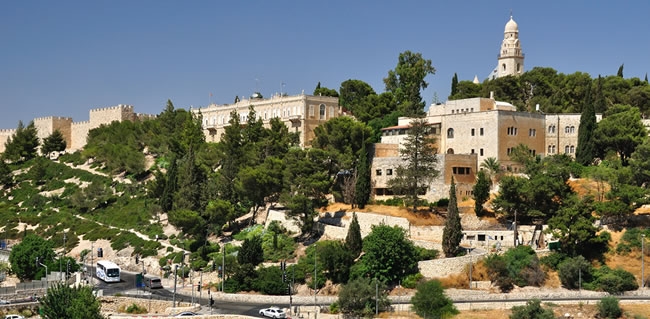Mount Zion, also written as Sion, in the Old Testament became a symbol and metaphor for the Promise Land, the Land of Israel. In the New Testament Mount Zion metaphorically is referred as the heavenly Jerusalem, God's eternal holy city.
Israel Tour Jerusalem-Bethlehem Border Crossing
For those traveling to Israel whom want to visit Bethlehem, you’ll need to carry your passport, however crossing from Bethlehem from Jerusalem, and back is not a difficult matter, especially since the terminal between the two cities has been upgraded by establishing convenient lanes for tourists moving between them.
Visit the Tower of David Museum in Jerusalem during your Tour to Israel
The medieval fortress, and an ancient citadel is located near the Jaffa Gate known as the "Tower of David," a national treasure of great historical and archaeological significance to Israel, and a historical entrance to the Old City, a symbol of Israeli patriotism for generations, and a wonderful “thing to do” on your Israel tour.
A Spiritual Retreat to Magdala on a Christian Pilgrimage Tour to Israel the Holy Land
Magdala also called Dalmanutha is located in the Sea of Galilee, a major 1st century port, and a focal point of exchange and trade, known for Mary Magdalene being born in this wealthy trading and fishing center (Mark 8:10 ; Matthew 15:39 , Luke 8:2 ). The port was a major exporter of salted fish to business sectors as far away as Europe. Archaeological discoveries in the 21st century have made it a Israel Christian pilgrimage tour destination.
Christians Tour Israel and Tabgha along the Shores of the Galilee
A truly breathtaking location in the Holy Land is Tabgha, a quiet cove on the northern shore of the Sea of Galilee and the scene of many Gospel stories, such as the Multiplication of Loaves and Fishes (Matthew 14:15-21, Mark 6:30-46, John 6:1-14). Today Christians touring Israel will find the Church of Multiplications that contains a beautiful mosaic of small loaves and fishes, marking the location where Jesus blessed the bread, a celebrated symbol since early Christians marked the site centuries ago.




